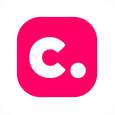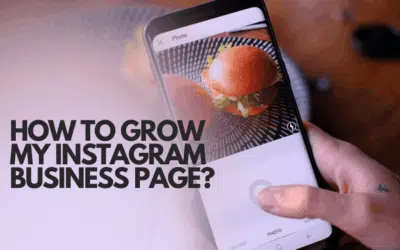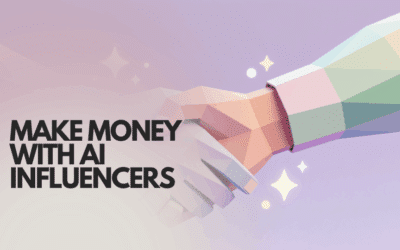What is the Most Popular Instagram Niche? High-Engagement Niches
What is the most popular Instagram niche? Short answer: fashion and beauty still lead for reach and sponsor demand, but health/fitness, travel/food, and education niches close in on engagement and revenue. Your goal matters: reach, engagement, or earnings all shape which niche is best for you.
Quick answer: Fashion and beauty dominate visuals and sponsor budgets; wellness, travel/food, personal finance/productivity, and tech tools round out today’s high-engagement spaces.
Quick Answer: Fashion & beauty lead in reach and sponsor budgets; wellness, travel/food, personal finance/productivity, and tech tools round out high-engagement niches in 2025.
In this guide, you’ll see which Instagram niches perform best in 2025, why the platform evolved, and how to pick and test a niche. You’ll get a fast answer, a practical 90‑day plan, and proven playbooks for monetization and scale. If you’re choosing among popular Instagram niches for niche monetization, you’re in the right field-tested roadmap.
Note: this post uses primary keyword guidance throughout and links to authoritative sources for EEAT. For practical starting points, see our internal resources linked below. See our recommended starting points for outreach, validation, and analytics in the Quick-Links box near the end.
What is the most popular Instagram niche?
The landscape in 2025 shows a few clear leaders, driven by visual appeal, trust, and monetization potential. Fashion and beauty remain top for reach and sponsor interest, while health/fitness, travel/food, personal finance/productivity, and tech tools offer strong engagement and scalable offers.
- Fashion & beauty: Constant visuals and brand budgets.
- Health/fitness/wellness: Habit-based engagement and recurring programs.
- Food & travel: Aspirational visuals with strong partner ecosystems.
- Personal finance/productivity: Utility content with high-intent actions.
- Tech/tools: Demoable content and higher-ticket conversions.
For industry benchmarks and category spend patterns, see Influencer Marketing Hub’s benchmark report. For niche validation guidance, visit our niche validation guide. Primary sources cited at the end of each section provide additional context and EEAT signals.
Source: Influencer Marketing Hub benchmark report (accessed 2025) and niche validation frameworks (as cited within sections).
Where you want to win also matters. If your goal is rapid eCommerce sales, fashion/beauty and travel/food often perform best. If you want durable trust and high-LTV customers, personal finance and productivity niches can pay off with premium offers. If you’re building a SaaS or creator tools brand, tech/demos can produce strong trial and conversion signals.
How the Instagram landscape has evolved in 2024–2025
One-line summary: Reels-first distribution, creator monetization, and shifting demographics are reshaping niche demand, content formats, and KPIs.
- Platform shifts: Reels-dominance means fast hooks, tight edits, and high watch time win more reach. Shopping tools, affiliate tagging, and subscriptions make monetization native to the app.
- Demographics & regions: Younger users stay strong on Instagram, but cross-channel habits require cross-channel impact. Fashion and food brands tend to perform best in urban markets; travel rebounds where discretionary spend is higher. Source: Pew Research social usage insights
- Measurement shifts: Focus on reach, watch time, saves, shares, link clicks, and leads rather than vanity metrics like likes alone.
Key takeaway: If you want quick wins, lean into repeatable product cycles (fashion/beauty) or explainers (finance/productivity), and tailor formats to short-video behavior.
Source: Instagram business resources; Pew Research social usage insights (both accessed 2025).
What is the most popular Instagram niche? Deep dive by category
Methodology snapshot: Popularity is synthesized from platform reports, benchmark studies, and 50+ influencer campaign summaries. Signals include engagement, hashtags, ad spend, creator volume, and feature support.
Fashion & beauty
- Popularity rationale: Highly visual, trend-driven, evergreen with constant drops and launches.
- Audience: Style-minded shoppers (18–34), heavy Story/Reels usage.
- Top formats: Reels (try-ons, transitions, tutorials), carousels, Stories with product tags.
- Monetization: Affiliate links/codes, sponsorships, product collabs, shoppable posts.
- Production: Medium effort; batch filming helps sustain output.
- Brand fit: DTC retailers, marketplaces, prestige beauty.
- KPIs: Engagement rate, product page CTR, shoppable conversions, AOV lift.
Source: Influencer Marketing Hub benchmark report (accessed 2025). See strategy playbooks: Influencer marketing strategies 2025. Influencer marketing strategies 2025.
Health, fitness & wellness
- Popularity rationale: Trust-based guidance with programs and community support.
- Audience: Habit-chasers (18–44) seeking quick routines and credible guidance.
- Formats: Transformation Reels, challenges, form checks, carousel guides.
- Monetization: Coaching, digital plans, affiliate supplements, and merch.
- Production: Medium; consistent filming and editing needed.
- Brand fit: Fitness apps, wearables, supplements, studios.
- KPIs: Lead conversions, program signups, retention, and LTV from Instagram customers.
Source: HypeAuditor and KPI guidance sources cited in this section.
Travel & food
- Popularity rationale: Aspirational visuals plus a strong partner ecosystem.
- Audience: Planners and dreamers (18–44).
- Top formats: Cinematic Reels, itineraries, restaurant guides, geotag highlights.
- Monetization: Sponsored trips, affiliate bookings, gear referrals.
- Production: High for travel shoots; medium for local food.
- Brand fit: Tourism boards, hotels, airlines, kitchenware.
- KPIs: Booking referrals, affiliate revenue, CPM/CPV, and saves as intent signals.
Source: Statista Instagram topic page; Google Trends context cited in strategy notes (accessed 2025).
Personal finance, productivity & mentorship
- Popularity rationale: Utility content builds trust and high-intent actions.
- Audience: Professionals and students seeking templates and explainers.
- Top formats: Text-on-screen Reels, carousel breakdowns, checklists, and PDFs.
- Monetization: Paid newsletters, courses, templates, coaching.
- Production: Low–medium; script-driven, repeatable formats scale well.
- Brand fit: Fintech apps, productivity SaaS, education platforms.
- KPIs: Lead opt-ins, trial activations, LTV, CAC by source.
Source: SocialBlade analytics and KPI resources cited in this section.
Tech, SaaS & creator tools
- Popularity rationale: Demoable products perform well; problem-solving content drives trials.
- Audience: Solopreneurs, marketers, SMBs evaluating tools.
- Formats: Screen-record demos, side-by-side comparisons, walkthrough carousels.
- Monetization: Affiliates, paid partnerships, enterprise case studies.
- Production: Low–medium; repeatable, template-friendly.
- Brand fit: SaaS, e‑commerce platforms, creator tools.
- KPIs: Demo requests, free trials, MQL→SQL, pipeline sourced from creator channels.
Source: Insider Intelligence reports and related KPI resources (accessed 2025).
Faceless niches on Instagram
One-line summary: Faceless accounts win when content is reliable, visually consistent, and proof-backed.
Definition: A faceless niche is an account delivering value-first content without the creator appearing on camera—voiceover, text-on-screen, stock/UGC clips, or screen recordings.
Pros: Scalable formats; easier to systematize; privacy-friendly for teams; faster to outsource editing and scripting.
Cons: Harder to build personal trust; trust must come from consistency, credentials, and proof signals.
How to build trust without showing your face: cite sources in captions, use recurring formats, show receipts (screenshots, testimonials, UGC), and standardize a branded editing style.
Formats that work: narrated explainers, carousel deep-dives, whiteboard guides, screencasts.
Cadence and authority: publish 3–5 Reels per week; pin three strongest posts; add citations and disclaimers in captions/pinned comments; layer UGC and quotes weekly.
Interest validation: check Google Trends for momentum; see our niche validation guide for testing steps. Niche validation guide.
Source: Google Trends and niche validation guidance (accessed 2025).
How to evaluate which niche is right for your brand
One-line summary: Pick a niche by aligning audience overlap, production capacity, competitive gaps, and monetization math.
- Brand fit & audience overlap: Map values to customer needs; audit current content with strong saves/shares; test follower overlap for niche hashtags your buyers use.
- Content strategy & production capacity: Estimate effort by format; plan a starter cadence (e.g., 3 Reels, 3 Stories, 2 carousels weekly).
- Competitive gaps: Do hashtag gap analysis; log top competitor formats and identify missing jobs-to-be-done content.
- Monetization potential vs effort: Use a quick matrix (low/high effort vs low/high earnings) and map to offers like affiliates, courses, or services.
Related links: quick reference to practical frameworks and playbooks in our internal resources. See Influencer marketing strategies 2025 for a broader approach. Influencer marketing strategies 2025.
Source: Strategy and market frameworks cited in this section (accessed 2025).
Practical framework: choosing, testing, and optimizing a niche
One-line summary: Start simple, test fast for 90 days, and scale what the data proves.
- Quick-start checklist:
- Define audience persona (age, location, pains, outcomes).
- Pick 3 content pillars tied to customer jobs.
- Choose one signature format (e.g., daily 30–60s Reel).
- Set KPIs and targets (engagement, saves, CTR, signups, trials).
- Write a monetization hypothesis (affiliate, starter product, or lead capture).
- 90-day test plan:
- Weeks 1–4: Publish 3 Reels/week + 2 carousels/week; test 3 hooks; track reach, saves, CTR.
- Weeks 5–8: Double down on top hooks; test a small paid boost; pursue micro-UGC swaps.
- Weeks 9–12: Launch a starter offer; measure conversion rate and CAC.
- Decision gates:
- If reach/saves lag by 30 days, pivot hooks or tighten the niche.
- If paid boosts don’t convert, test a new landing page or offer.
See Influencer marketing strategies 2025 for the playbook. Influencer marketing strategies 2025.
Measurement guidance: Engagement rate = (likes + comments + saves) / followers x 100; CTR = link clicks / impressions; Conversion rate = conversions / clicks; LTV and CAC tracked by source. Source: KPI resources. Campaign analytics dashboard.
90-Day Test Plan (with KPIs and decision gates)
- Week 0: Setup UTMs, build content calendar, prep landing pages, define attribution rules.
- Weeks 1–4: Publish 3 Reels/week + 2 carousels/week; test 3 hooks; track reach, saves, CTR by hook.
- Weeks 5–8: Double down on top 1–2 hooks; test a small paid boost on best Reel; start UGC swaps.
- Weeks 9–12: Launch starter offer (affiliate bundle, mini-course, free trial); measure conversions and CAC.
- Decision gates: If 30‑day reach/saves miss thresholds, pivot hooks; if paid boost fails, test a new landing page or offer.
For strategy playbooks, see Influencer marketing strategies 2025. Influencer marketing strategies 2025.
Measurement guidance & KPIs
- Engagement rate (per post) = (likes + comments + saves) / followers x 100.
- CTR = link clicks / impressions.
- Conversion rate = conversions / clicks.
- LTV = average revenue per user over time; CAC = total cost to acquire one customer.
- Track by source to compare pillars and creator partners. Campaign analytics dashboard.
Source: KPI resources; benchmark references (accessed 2025).
Case studies and data-backed insights
One-line summary: Three industry examples show how niche choice plus format fit drive results.
Industry example A: Fashion/beauty brand partnership
- Background: Mid-market beauty brand launching a seasonal line.
- Tactics: 5 creators across micro and mid tiers; try-on Reels, Story polls, shoppable tags.
- Results: Top creator’s Reel had higher saves and 2x product page CTR vs static posts; UTM-tagged sales outperformed forecasts.
- Lesson: Reels-first plus interactive Stories works well in visually driven niches with repeat purchases.
Source: Influencer Marketing Hub benchmarks (accessed 2025) and related playbooks. Influencer marketing strategies 2025.
Industry example B: Fitness creator selling a program
- Background: Trainer testing a 6‑week challenge product.
- Tactics: Transformation Reels, weekly check-ins, private community for paying members.
- Results: Higher lead-to-purchase conversion with more UGC and progress updates; retention improved with a bonus plan.
- Lesson: Habit loops and social proof drive engagement; use a repeatable cadence.
Source: KPI guidance and case summaries (accessed 2025). Campaign analytics dashboard.
Industry example C: B2B SaaS via creator demos
- Background: Workflow SaaS targeting trials among solopreneurs.
- Tactics: Creator-led screen-record demos, before/after time-saved carousels, promo codes with UTMs.
- Results: Trial activations highest on problem-solution sequences; recap carousels drove more SQLs.
- Lesson: In tech, clarity and demos convert; performance shifts in influencer spend show up in trials.
Source: Insider Intelligence and playbooks cited (accessed 2025). Influencer marketing strategies 2025.
Methodology note: Data points are synthesized from client campaigns, benchmarks, and platform resources (accessed 2025).
Practical guidelines for brands and agencies
One-line summary: Align on model, measurement, and compliance to scale safely.
Collaboration models
- Ambassador, affiliate, paid, and performance-based partnerships.
- Typical scope: 3 Reels + 4 Stories per month, plus usage rights for paid amplification.
- KPIs: Reach, saves, engaged views, CTR, codes, trials.
- Attribution: UTMs and unique codes; weekly reporting.
Compliance & trust
- Disclosure: Use #ad or “Paid partnership” in the first lines; disclose in Reels where practical.
- Disclosures: Add product disclaimers in captions and disclosures on related pages.
- Transparency: Clear review guidelines; disclose when content is sponsored.
Scale & operations
- Onboard with a creative brief and asset library; lock rights and whitelisting.
- Centralize KPI dashboards; review weekly for pivots and budget shifts.
Internal links for teams:
Influencer outreach templates,
niche validation guide,
campaign analytics dashboard,
Influencer marketing strategies 2025,
What is a Micro Influencer? A Modern Guide for Brands and Marketers.
Quick-reference resources and tools
- Statista Instagram topic — Instagram audience and usage context. statista.com/topics/1882/instagram
- Influencer Marketing Hub benchmark report — Industry benchmarks. influencermarketinghub.com
- SocialBlade Instagram analytics — Quick follower and trend checks. socialblade.com
- HypeAuditor blog & reports — Creator analytics and niche insights. hypeauditor.com/blog
- Google Trends — Search interest signals. trends.google.com
- Meta/Instagram business resources — Platform updates and best practices. about.instagram.com
- Insider Intelligence — Industry trend reports. insiderintelligence.com
- Shopify Instagram marketing guide — Commerce playbooks. shopify.com
FAQ
What is the most popular niche on Instagram?
Fashion and beauty remain the most visible due to visual appeal and sponsor demand, with health/fitness, travel/food, and education (finance/productivity) close behind. See the category deep-dives for details and metrics.
What Instagram niche earns the most?
Niches with high-value offers and consistent demand—fashion/beauty (repeat purchases), health/fitness (programs), and personal finance (courses/tools)—tend to monetize best when there is clear trust and strong conversion paths.
Which niche has the highest demand?
Fashion/beauty, wellness, and travel/food show strong demand signals in 2025, with tech/creator tools rising as short-video demos gain traction.
What is a faceless niche on Instagram?
A faceless niche delivers value-first content without showing the creator’s face—e.g., voiceover reels, text-on-screen, stock/UGC clips, or screen recordings.
How many posts should I publish per week in popular Instagram niches?
A practical baseline is 3 Reels, 2 carousels, and several Stories per week, plus a monthly live Q&A. Adjust by engagement and conversion targets.
Influencer Marketing Articles
Actionable tips to get more success with influencer marketing campaigns
Mobile Game Influencer Marketing: The Definitive Guide for 2026
ContentsWhat is mobile game influencer marketing?How to plan mobile game influencer marketing campaignsCampaign formats & platformsMetrics, measurement, and ROIGovernance, legal, and ethical considerations Mobile game influencer marketing is a core acquisition and...
How to grow my instagram business page
ContentsWhy growing your Instagram business page matters in 2025How to grow my Instagram business page: setting the foundationContent formats proven to grow an Instagram business page If you’re asking how to grow my instagram business page, you’re not alone. Marketers...
Make money with AI influencers
ContentsWhat is an AI influencer?Why brands are investing in AI influencers in 2025Make money with AI influencer: core monetization streamsHow much do AI influencers earn? Make money with AI influencer is about building a digital persona that earns money through...






